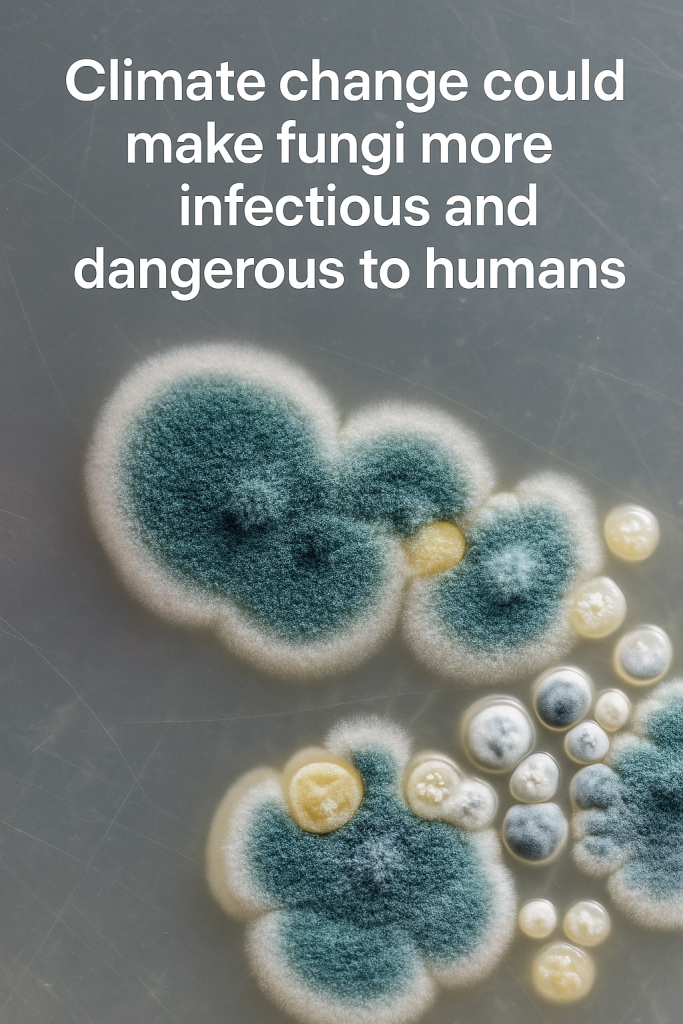As climate change continues to reshape ecosystems worldwide, new research suggests that one of its less discussed but potentially grave consequences is the increased threat posed by fungal infections to human health. Scientists are raising alarms that global warming not only boosts the prevalence of fungal diseases, but also enables fungi to become more infectious and dangerous.
Fungi: An Emerging Public Health Challenge
Fungal infections have historically received less attention compared to viral or bacterial diseases. Yet, fungi cause over 1.5 million deaths annually worldwide, and experts warn the figure could rise sharply amid shifting climate conditions. Warming temperatures foster environments ideal for fungal growth, especially in tropical and subtropical regions, where many pathogenic species thrive.
“Climate change is altering the geographical distribution and virulence of fungal pathogens,” explains a leading expert in infectious diseases. “As temperatures rise, fungi can invade new territories and even overcome human body defenses that once limited their spread.”
How Climate Change Enhances Fungal Infectivity
The human body maintains an internal temperature around 37°C (98.6°F), which naturally limits many fungi from establishing infections. However, as ambient temperatures grow closer to the body’s baseline, fungi adapt by evolving heat tolerance, making them more capable of infecting humans.
Recent studies indicate that fungi such as Cryptococcus — a yeast known to cause severe respiratory and neurological infections — are becoming more heat resilient. This adaptation enables them to survive within the human body and pose a bigger threat, particularly to immunocompromised individuals.
Moreover, climate change-driven shifts in humidity, precipitation patterns, and extreme weather events create optimal conditions for fungal spores to sporulate and disperse. Increased exposure to these spores, often airborne, enhances the risk of infection, especially in urban and agricultural settings.
Rising Cases and Global Health Concerns
Health authorities worldwide have documented a growing incidence of fungal infections, including invasive aspergillosis, candidiasis, and histoplasmosis. Alarmingly, new fungal pathogens are emerging, while existing ones exhibit resistance to multiple antifungal drugs, presenting treatment challenges.
The intersection of climate change and fungal diseases is especially worrisome for vulnerable populations, including those with weakened immune systems due to HIV/AIDS, cancer treatments, or organ transplants. These patients face heightened odds of severe and potentially fatal fungal infections.
Preparing for the Fungal Future
Experts emphasize that addressing this looming threat requires coordinated global action. Enhancements in fungal disease surveillance, improved diagnostic capabilities, and accelerated development of novel antifungal therapies are critical steps.
Public health systems must integrate climate projections into infectious disease models to better predict outbreaks and guide preventive strategies. Meanwhile, increasing awareness about the connection between climate change and rising fungal risks can foster broader support for mitigating its overall impacts.
“Fungal infections have remained largely in the shadows of infectious disease research,” the expert notes. “But as climate change fuels their spread and severity, it becomes urgent to prioritize fungal pathogens alongside other climate-sensitive health threats.”
In a warming world, the silent menace of fungi may grow louder—prompting a new frontline in combating infectious diseases shaped by our changing environment.



